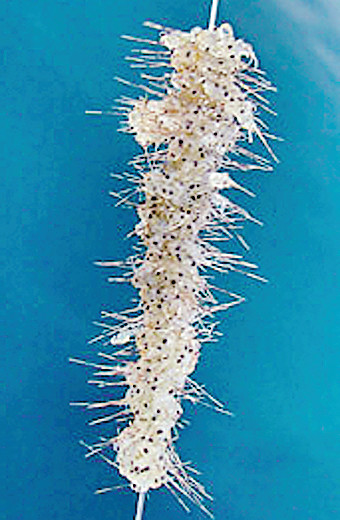Support the Timberjay by making a donation.
Spiny waterfleas confirmed in Basswood Lake
BASSWOOD LAKE— Yet another popular wilderness lake has been infested with invasive spiny waterfleas. According to the Department of Natural Resources, Basswood Lake is the latest confirmed case of …
This item is available in full to subscribers.
Attention subscribers
To continue reading, you will need to either log in to your subscriber account, or purchase a new subscription.
If you are a current print subscriber, you can set up a free website account and connect your subscription to it by clicking here.
If you are a digital subscriber with an active, online-only subscription then you already have an account here. Just reset your password if you've not yet logged in to your account on this new site.
Otherwise, click here to view your options for subscribing.
Please log in to continue |
Spiny waterfleas confirmed in Basswood Lake
BASSWOOD LAKE— Yet another popular wilderness lake has been infested with invasive spiny waterfleas. According to the Department of Natural Resources, Basswood Lake is the latest confirmed case of the spread of this invasive pest.
The discovery was confirmed in zooplankton samples taken by the University of St. Thomas in partnership with the DNR fisheries staff. In addition, DNR fisheries officials found spiny waterflea in the stomach contents of Basswood Lake cisco.
“It was probably just a matter of time,” said DNR large lake specialist Duane Williams, in Tower. Williams noted that Basswood is a connected downstream water to Shagawa Lake, which has had the waterfleas for at least two years now. “We’ve also found them in Fall Lake,” Williams said.
Basswood will now be added to the list of infested waters, along with the following downstream waters: Crooked Lake, Iron Lake and Bottle Lake. The Basswood and Bottle rivers will also be designated as infested waters due to connectivity and the likelihood of infestation spread. Lac La Croix, a water body downstream from Basswood Lake, was designated as infested when spiny waterflea was discovered there in 2008.
“The DNR is coordinating with Canadian officials at the Ontario Ministry of Natural Resources to alert boaters and other recreationists about the risk of spreading the invasive species,” said Rich Rezanka, DNR aquatic biologist.
The impact of the discovery on the productive Basswood Lake fishery is unclear. According to Williams, the arrival of the waterflea will likely diminish the diversity of the zooplankton community within the lake. “What this means in terms of fish is still unclear,” he said.
While adult tulibees in Basswood do appear to be feeding on the small crustaceans, Williams said very small fish have a harder time feeding on them, due to the large spine located on the waterflea’s back. “And they’re much bigger than other zooplankton,” said Williams. That allows the waterfleas to actually feed on other zooplankton, which makes them a competitor to small fish which also rely on zooplankton for food.
The waterfleas reproduce by a process called parthenogenesis, a form of reproduction in which offspring are produced without fertilization. During most of the year, the species population is entirely female, which allows for rapid population growth.
Microscopic spiny waterflea eggs are hardy and capable of overwintering in lakes, and their small size makes them an easy candidate for overland transfer in water or mud.
When populations are high, anglers can experience frustration with masses of spiny waterfleas clogging fishing and downrigging lines, and other water equipment.
Bait harvest without a permit is prohibited in lakes listed as infested with spiny waterflea.






